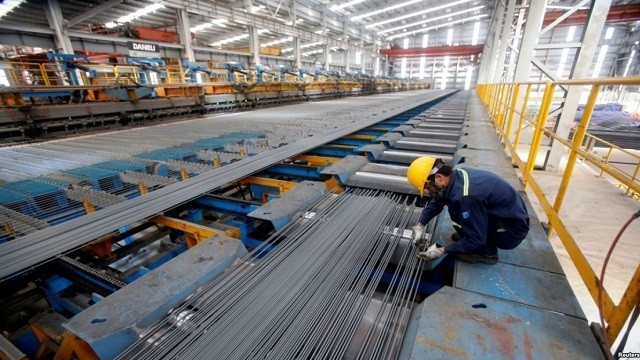Great pressure
Currently, the steel industry faces many trade defence lawsuits. It is expected that the number of lawsuits will continue to increase in the coming years as the US-China trade war has shown no sign of subsidence. By the end of August 2018, there were 128 trade defence lawsuits to initiate investigations into Vietnam's exported goods. Of these, 85 percent of the trade defence lawsuits involved the steel industry.
Over the past month, Vietnam has been faced with nearly 10 trade defence lawsuits from seven different markets. As a result, the steel industry has become the industry most affected by the lawsuits. It is forecasted that the export of steel products will face many difficulties in the coming time.
In the domestic market, Vietnam’s steel industry has also faced fierce competition from imported steel, especially from China. As in Vietnam, in recent years, the steel industry of some countries, including China, has faced problems such as excess of supply, increasing production costs, reduced profits due to labor costs, and environmental regulations and anti-dumping duties on products exported, especially since the US-China trade war began. In the trend, China is looking to bring large quantities of its residues to other countries or actively support steelmakers relocating factories to abroad.
According to statistics from the Ministry of Industry and Trade, China's steel output has increased more than 12 times in the past 25 years to 803 million tonnes, but the demand is only about 672 million tonnes. With 131 million tonnes of excess steel, China has become a major competitor to many countries, including Vietnam. According to Vietnam Steel Association (VSA), in the past nine months, domestic steel production increased well, reaching over 17.6 million tons, up 14.4% over the same period. Steel consumption reached nearly 16 million tons, up 23.4% over the same period, of which over 5 million tons is export, up 30.8% over the same period. In the eight months of 2018, the volume of Vietnam’s imported steel is only 10 million tons, down 16.5% over the same period. In particular, importing steel products from China reached more than 4.4 million tons, down 16% over the same period, but still accounted for 47% of the total amount of imported steel products.
Improve competitiveness
It can be seen that China's export of large amounts of steel to Vietnam is no longer a strange story. In previous years, Vietnam’s capacity for steel production was not enough to meet the demand, so the import from China is considered a positive factor for manufacturing industry, domestic construction. However, in recent years, despite the reduction of steel imports from China, due to domestic production meeting the demand, the country continues to push a portion of surplus steel to Vietnam by all means, from discount to export support policies. So, Vietnam is now in the group of countries suspected of being the hub of Chinese steel to other countries to evade anti-dumping tax. That affects the export of Vietnam.
According to VSA’s Vice Chairman Nguyen Van Sua, the other countries’ suspicion on China’s steel under the cloak of Vietnamese steel will cause difficulties to domestic enterprises in exporting, especially since the US-China trade war.
Meanwhile, the domestic steel companies are actually still limited in financial capacity and technology, leading to high fuel costs. That is why domestic steel products have a hard time competing with cheap imported products. Therefore, in order to deal with a large volume of cheap Chinese steel imported into Vietnam and avoid unnecessary lawsuits, economist Ngo Tri Long said that domestic steel enterprises should improve their competitiveness and product quality, especially in the context of integration and safeguard measures are applied as much as present. The steel companies should optimise the scale of production with closed process; careful investment research on Vietnamese products which have not been produced has great development potential. At the same time, it is necessary to be active in the source of raw materials, diversifying the market, and product structure, especially products with good export potential and high profit margin. In addition, the State should have policies and measures to strictly control the import of steel to protect domestic enterprises; continuing to promote the policy of economic development, macroeconomic stability in parallel with stabilising bank interest rates, creating confidence for businesses.
















